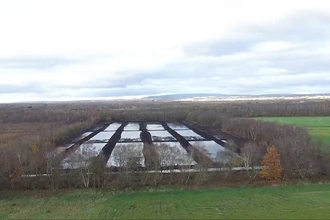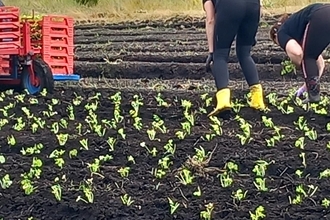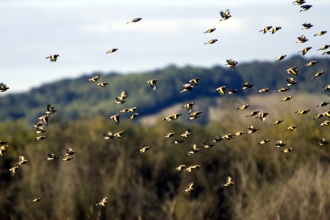Rindle Field in Greater Manchester was once a potato field, but boggy and unproductive it was about to be given over to growing lawn turf – until we turned it into a pioneering wetter farming trail.
The area was first converted to farmland over 100 years ago by draining the lowland raised peat bog, and was typical of the land use across many of the UK’s lowland peatlands. However, once the answer to feeding our burgeoning industrial populations, many of these areas are now proving increasingly difficult to farm, along with exacerbating the climate emergency.







